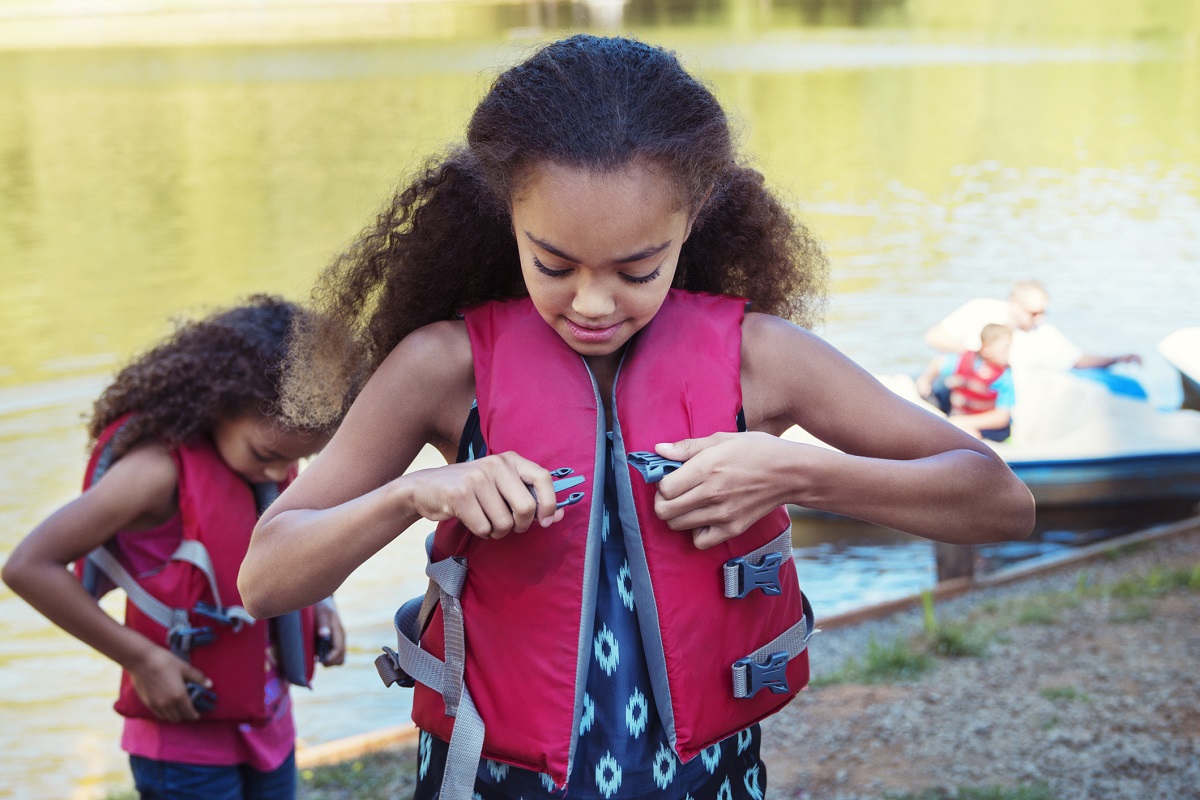“Where people get into trouble, where they become injured is when they think ‘it’s not going to happen to me’ or they fly by the seat of their pants,” said Amy Bollinger, trauma education, outreach and injury prevention coordinator at Penn State Health.
Of drowning deaths in children ages 5–14, 40% occur in natural water. More than half of drownings (fatal and non-fatal) in people 15 and older happen in natural, open water. Given these statistics, keeping safety top of mind just makes sense.
While safety in swimming pools and open water often overlaps, there are extra considerations when it comes to open, natural bodies of water — oceans, lakes, rivers, ponds and more.
The basics on the boat and on shore
When it comes to boating, designating a sober operator is essential for safety – and it’s required by law. “Impairment is impairment, and it doesn’t matter if it’s a car or a motorcycle or a boat,” Bollinger said. Additionally, it’s critical to pay attention to other boaters, just like you would in any defensive driving scenario. The Pennsylvania Fish and Boat Commission offers boating safety courses and certificates, which are required for most motorized boating.
Whether you’re entering the water from land or boat, keep a U.S. Coast Guard-approved life jacket or other personal flotation device on each person. On boats, they’re required for everyone, but they can also be a helpful safety measure in other open water situations, particularly for children with limited swimming ability.
Water conditions in different bodies of open water can vary greatly by day and even by hour. Staying up to date on the latest coastal data is a must. Boaters and other recreation enthusiasts can get the latest information on tides, currents, weather and storms at the National Oceanic and Atmospheric Administration (NOAA) website .
Currents in particular can be a source of danger after heavy rains on any open water, but particularly at ocean shores when they develop into riptides. Jen Lau, manager of the Pediatric Trauma and Injury Prevention Program at Penn State Health, describes riptides as narrow streams of water that pull someone further into the ocean.
“The important thing to recognize is not to try to fight it and swim against it,” said Lau. “The ocean will always be stronger than we are.” Instead, teach others – children and adults alike – to take a breath, then swim parallel to the shore, or perpendicular to the current, to escape the narrow riptide.
Visibility can be tough in open water in general, but especially at night. Night swimming and boating do come with even greater risk. In these cases especially, “You have to know the waterway,” Bollinger said. And, she added, have “major respect for the water.”
Added precaution for children
Lau says supervising children around open water should never be an afterthought. “If you’re somewhere where there’s a lifeguard or lots of adults, it can give you a false sense of security,” she said. Having a plan for supervision ahead of time is important. Lau recommends identifying an adult to be a “water watcher” for a 15-minute interval to keep an eye on the kids in the water.
Penn State Health partners with Safe Kids, an international organization working to protect kids from unintentional injuries such as drowning. Safe Kids recommends five water survival tips, which should be retaught in open water after learning in a controlled environment like a pool:
- Getting in water over your head and returning to the surface
- Turning around in the water and orienting yourself to safety
- Floating and treading water
- Combining breathing with forward movements
- Exiting the water
“The color of the swimsuit matters,” Lau adds. Rather than getting your children a green or blue suit that can blend in with their surroundings, consider a brightly colored suit, such as orange or yellow, that helps you see them from afar. Unlike its depictions in the movies, drowning is silent, so anything to help with visual cues is a big plus.
Don’t avoid the fun — swim in open water (safely)
“If you’ve done the work on the front end,” said Bollinger, “you can then more fully enjoy your day on the water.”
For kids, Lau said exploring in open water is developmentally a net-positive, but parents need to understand the risks. “It does have more danger,” she said. “That’s just something to be cognizant of, because there are steps that we can take to be safe in open water.”
Related content:
- The Medical Minute: How to protect your child from drowning
- Summer Swim Safety (Centers for Disease Control and Prevention)
The Medical Minute is a weekly health news feature produced by Penn State Health. Articles feature the expertise of faculty, physicians and staff, and are designed to offer timely, relevant health information of interest to a broad audience.



